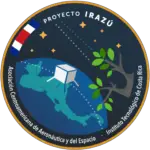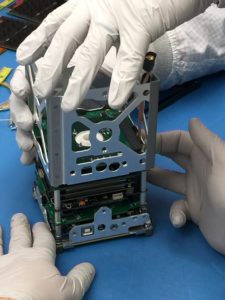
The Central American Association of Aeronautics and Space (ACAE) announced today the development of a new project that will put Central America once again in space. This is the construction of a CubeSat (a small satellite or nanosatellite) which will have as a scientific mission to measure the exposure to flood watershed selected in the Central American region and thus be able to prevent the impact caused by them.
The satellite is scheduled to be sent in 2021 to the International Space Station (ISS). The project will have the direction and experience of the ACAE team in Costa Rica, which concluded last year a successful space mission with the Irazú Project and the Batsú satellite CS-1.
On the other hand, the scientific mission and the previous stages of the project will have the participation of experts from the School of Geography of the University of Costa Rica (UCR) and the University of San Carlos in Guatemala (USAC), while the integration The satellite will be developed in the Republic of Honduras thanks to the participation of the National Autonomous University of Honduras (UNAH). The Costa Rican Radio Amateur Association (Radio Club Costa Rica) will also collaborate in the downloading and dissemination of the information transmitted by the satellite.

The development of capacities in Honduras will be achieved through an agreement with the Kyushu Institute of Technology in Japan (Kyutech), thanks to a lasting relationship between this institute and ACAE, which goes back to the initial stages of space development in Costa Rica and which It has strengthened in recent years. Fernando José Zorto Aguilera, Coordinator of the Morazán project in Honduras and director of the Research Institute of Applied and Technological Sciences of the UNAH, says that in Honduras there is a collective emotion surrounding the development of this satellite.
On the other hand, Carlos Enrique Alvarado, president of ACAE, expresses that “the Morazán Project will be the 3rd satellite in Central America and the first nanosatellite in Honduras, but the most important thing is that it will be the first to be developed through a close association between nations of Central America. That is to say, it marks a historic milestone and reinforces once again that we can develop a highly complex spatial project in all its stages”.
Technology for Earth observation and geospatial information provide detailed information about the demography and the environment, such as the Earth’s atmosphere and the oceans, allowing a better understanding of the systems that make up our planet.
Even when applied on a small scale, space technology can contribute to the monitoring of sustainable objectives, since the information generated can be integrated with other resources such as measurements, open data platforms such as NASA‘s LandSat and generate new data and useful information for the decision making, explained Luis Diego Monge, manager of the Morazán Project.
“One of the most representative examples of what you want to avoid with the satellite is the case of the tropical storm Nate where the water reached 2 meters above ground level. As this event occurred at night and the cell phone communications towers collapsed by the currents of the river, the national authorities were unaware of the situation, since the small city was cut off. With the satellite, this situation would have been prevented”, added Alvarado.


